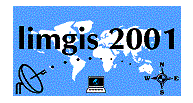


GEOGRAPHIC
Working of GIS
A GIS stores information about the world as a collection of thematic layers that can be linked together by geography. This simple but extremely powerful and versatile concept has proven invaluable for solving many real-world problems from tracking delivery vehicles, recording details of planning applications, to modelling global atmospheric circulation. The working of a GIS can be summarised as:
Relating information from different sources
The ability of GIS to relate information from disparate sources helps in planning and management of natural resources. A GIS can be used for converting existing digital information, which may not be in map format, into forms, which it can recognise and use. For example, digital satellite images can be analysed to produce a thematic layer of digital information about vegetation. Additionally, existing tabular data such as census can be converted to map-like format. For the data to be usable, it needs to be geo referenced to the map in some way.
Geographic
References
Geographic information contains either an explicit geographic reference, such as a latitude and longitude or national grid co-ordinate, or an implicit reference such as an address, postal code, census tract name, forest stand identifier, or road name. An automated process called geocoding is used to create explicit geographic references (multiple locations) from implicit references (descriptions such as addresses). These geographic references allow you to locate features, such as a business or forest stand, and events, such as an earthquake, on the earth's surface for analysis.
Data
capture
The process of getting data into a digital format recognised by the GIS is known as data capture. Data on existing paper maps can be digitised or hand traced using a mouse in order to collect the co-ordinates of the features. Electronic scanning devices are the other options for the data capture. This step is the most time consuming part in creating a GIS.
Data
Integration
A GIS stores information as a collection of thematic layers, which are linked together by geography. Underlying these layers are associated tables of spatial and descriptive attributes that describe the geographic features.
Projection
and Registration
All
the information that is obtained from various disparate sources has to be
converted to consistent spatial references before using in GIS. This process
aligns all the data layers by establishing a consistent co-ordinate system for
all the data layers. Before data is analysed, in most of the GIS projects,
projection of the map is done. Projection, one of the fundamentals of mapmaking,
is the mathematical method of transferring information from the earth's
three-dimensional surface to two-dimensional medium. Map projections, however,
will result in the distortion of one or more of these properties: shape, area,
distance and direction. Some of the projections that are used are Universal
Transverse Mercator (UTM), Lambert Conformal Conic, etc.
Data
structures
Geographic
information systems work with two fundamentally different types of geographic
models, the "vector" model and the "raster" model.
Raster organises spatial features in a regularly spaced grid of cells or pixels, while the vector data structure organises spatial features by a set of vectors, which are specified by starting point co-ordinates (i.e. the information about points, lines, and polygons is encoded and stored as a collection of x, y co-ordinates). The location of a point feature, such as a location of borehole, can be described by a single x, y co-ordinates. Point features are represented as vectors without length or direction. Linear features, such as roads and rivers, can be stored as a collection of point co-ordinates. Polygonal features, such as land parcels and river catchments, can be stored as a closed loop of co-ordinates. Compared to a line designated in a raster format, a vector line is one-dimensional and has no width associated with it. The vector model is extremely useful for describing discrete features, but less useful for describing continuously varying features such as soil type.
Advantages of vector type data
The smallest feature in a raster data structure is represented by a single pixel. The raster model has evolved to model continuous features. A raster image comprises a collection of grid cells rather like a scanned map or picture. Both the vector and raster models for storing geographic data have unique advantages and disadvantages.
Advantages of raster data type